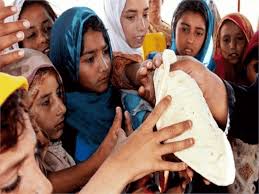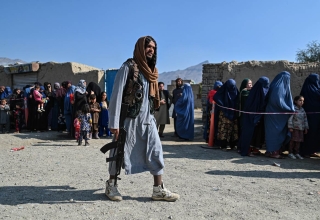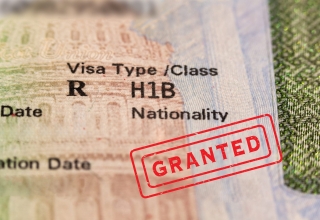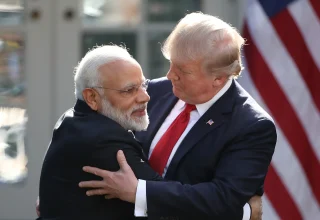
WASHINGTON DC: A World Bank report by Indermit Gill and Ayhan Kose has identified that the world’s poorest countries are home to a quarter of humanity — 1.9 billion people but have prized natural resources, including one-fifth of the world’s copper and gold reserves, as well as many of the rare metals essential for the transition to clean energy.
The report says that the working-age populations are set to expand for the next five decades amid demographic decline nearly everywhere else. Yet a historic reversal is underway among the world’s 75 countries eligible for grants and low-interest loans from the World Bank’s International Development Association (IDA).
For the first time this century, the income gap relative to the wealthiest economies is widening in half of IDA countries. And while these countries are midway through what could be a lost decade, the rest of the world is largely averting its gaze. IDA countries have an extreme-poverty rate eight times higher than the global average. They account for 70 percent of all extreme poverty, and they are home to 90 percent of people facing hunger or malnutrition. Many of their national governments, meanwhile, are paralyzed, and half are either in debt distress or at high risk of it.
The flow of foreign capital has largely dried up for IDA countries. In 2022, for the first time in 16 years, private creditors took more in principal repayments than they put in via loan disbursements to IDA governments and government-guaranteed entities. Financing from foreign governments dwindled to an 11-year low. The remaining lifeline has been multilateral development banks, especially the World Bank, which provided more than half of the $26 billion in loans that IDA governments received from multilateral creditors in 2022.
The WB sees a dangerous retreat from the principles upon which much of the global economic architecture was built after World War II. Back then, the wealthiest economies wisely recognized their interest in improving the welfare of the weakest. The 17 donor countries that made their first financial contributions to the IDA in 1960 believed that an acceleration of “economic and social progress in the less-developed countries is desirable not only in the interests of those countries but also in the interests of the international community.”
The global prosperity that followed validated this insight. Three of today’s global economic powerhouses—China, India, and South Korea — are former IDA borrowers whose growth has transformed them into important IDA donors.
36 countries that once were IDA borrowers no longer depend on it, with a dozen “graduating” in the last two decades alone.
The WB report says the path to prosperity is rarely linear. Progress often occurs in fits and starts, with some countries advancing and then regressing. But there is no doubt that the IDA’s consistent support for the weakest economies has done immense good for the world. In all, 36 countries that once were IDA borrowers no longer depend on it, with a dozen “graduating” in the last two decades alone.
Today’s IDA countries account for a mere 3 percent of global gross domestic product (GDP). Yet their economic potential is considerable, owing to the demographic dividend inherent in their population growth. These countries will have deep reserves of young workers at least through 2070, long after working-age populations in other countries have dwindled.
IDA countries are endowed with a trove of mineral deposits that are crucial for the world’s transition to clean energy, including silicon in Bhutan and manganese in Ghana. Most IDA countries are also well placed to take advantage of solar energy, with long-term daily generating potential among the highest in the world.
But IDA countries will enjoy neither durable growth nor stability unless they can make productive jobs readily available for young people entering the workforce, and that will require substantial investment in health and education. Moreover, lasting benefits from their natural-resource wealth will remain out of reach without government institutions capable of nimbler economic management.
Ensuring that IDA countries achieve their full potential will require a concerted effort involving vigorous domestic reforms and stronger financial and policy support from abroad. South Korea, India, and China have shown that when countries undertake the ambitious reforms needed to accelerate investment, a kind of economic magic occurs: productivity surges, incomes rise, and poverty falls. Investment needs in IDA countries are immense. In some, improving access to electricity and basic sanitation facilities will require infrastructure investments that exceed 10 percent of GDP.
On average, each IDA country today has succeeded at least once over the past 50 years in achieving sustained investment acceleration. But that is only slightly more than half the average of earlier groups of IDA countries. To raise their game, today’s IDA countries will need to bolster fiscal and monetary frameworks, ramp up cross-border trade and financial flows, and improve the quality of institutions.
Global assistance will also be essential. IDA countries deserve financial support from abroad and fresh policy solutions to make the transition to clean energy. Already, climate change is making them pay a steep penalty for others’ sins. They also need an improved global debt-restructuring system. The current framework consigns them to an indefinite purgatory. And they need global help to tackle food insecurity, especially now that faraway international conflicts and trade disruptions have added to the problem.
In the coming decades, the world will need to summon every available reserve of economic potential to achieve universal peace and prosperity. It cannot afford to turn its back on a quarter of its people.








